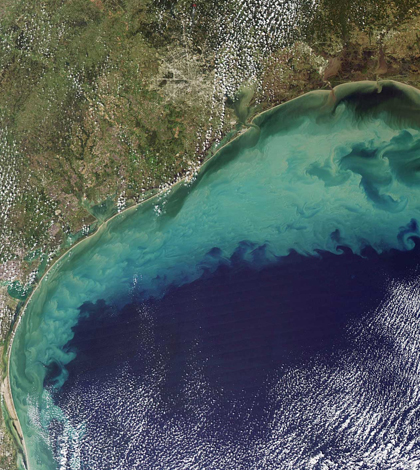Gulf Of Mexico Dead Zone Forecast For 2016

Gulf of Mexico circa 2009. (Credit: Jeff Schmaltz / NASA Earth Observatory)
Scientists at the University of Michigan and several U.S. government agencies are predicting an average-sized dead zone for the Gulf of Mexico this year, according to a statement. But that’s not good news, they stress, because the average dead zone predicted is far above the extent that management plans were aiming to reduce the hypoxic zone by 2015.
Back in 2001, the Mississippi River / Gulf of Mexico Watershed Nutrient Task Force set a goal for 2015 of limiting the dead zone to 1,950 square miles. Instead of reaching that goal this year, the forecast calls for an hypoxic zone as large as the state of Connecticut — an area estimated at 5,898 square miles.
To calculate the dead zone estimate, researchers at the U. of Michigan, U.S. Geological Survey (USGS), Virginia Institute of Marine Science and the National Oceanic and Atmospheric Administration used data from USGS real-time stream gauges and nitrate sensors deployed throughout the Mississippi River Basin. These give them an idea of how nutrient loads are changing over time and fueling the dead zone.
The full 2016 Gulf of Mexico hypoxia forecast is available on the University of Michigan website.
Top image: Gulf of Mexico circa 2009. (Credit: Jeff Schmaltz / NASA Earth Observatory)




0 comments